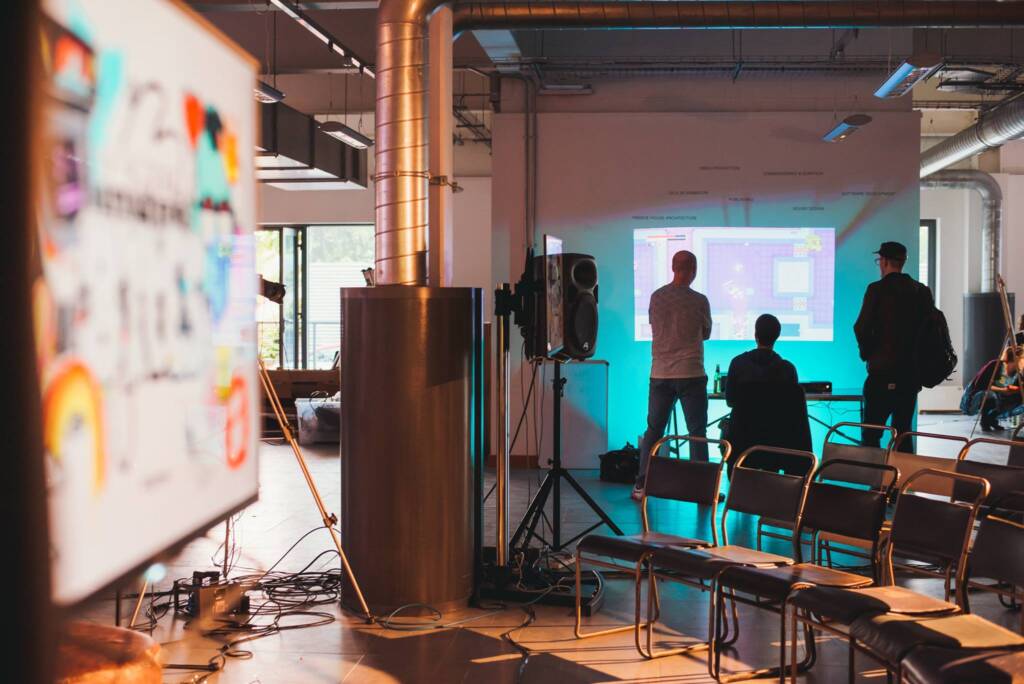
24.10.23

Walking with his back to the camera, William Kentridge picks up a cloth and wipes clean the corner of the drawing pinned on his studio’s wall: “You can change charcoal as quickly as you can change your mind”. In an interview from a few years ago, the artist explains his approach: “art must defend from the uncertain”.
Creative spaces often host a certain amount of uncertainty. In them, questions are asked, experimentations made and collaborations negotiated. They create space for ‘what could happen’. From parents taking their children to a place where they can design and make, to a creative practitioner who needs somewhere to work on a piece bigger than themselves.
The result of making room for all this possibility is that a lot of things become possible: films, music, books, video games, clothes, exhibitions, workshops, plays, performances, events, public art. The list is endless.
But these centres of possibilities have been running out of options. Creative Scotland recently stated that one in three arts organisations face “serious risk of insolvency in the short term” due to rising costs and standstill public funding. Dundee Contemporary Arts has warned that lack of clarity over funding decisions might ‘fundamentally change the organisation’ and its impact in the city. Other places didn’t even have enough time for a warning; studios, co-working spaces and shops, cafes and other venues that supported creative and community events.
The picture for the creative industries is grim and, unfortunately, not new. Below are a couple of studies of creative spaces in Dundee, detailing their closure and the insights they might offer. Some of the sources here come from the No Space for Design podcast by Agency of None which touched on this exact topic.
Over a decade ago, artists were struggling to find reasons to stay in Dundee. It is common to associate working in the arts with some ongoing precarity, but at a bare minimum they need spaces for creativity to happen – studios, galleries, workshops – and there was a chronic lack of those in the city.
It was easier to find them in Glasgow, Edinburgh and London. Sure, bigger cities had their own challenges but staying somewhere one couldn’t even find the space to make, seemed like a non-starter. As artist and facilitator Jo Helfer explains, at a certain point she found herself in a group of DJCAD graduates who had come to this exact crossroads: “Dundee wasn’t the place for artists to thrive”.
That’s when Tin Roof Arts Collective was born. They took on a big warehouse on Bellfield Street that required a lot of work, and got very cold in the winter, but it was able to accommodate artists working with materials and scale that couldn’t be easily accessed anywhere else in the city. As more people had more space, a local scene of new artists grew.

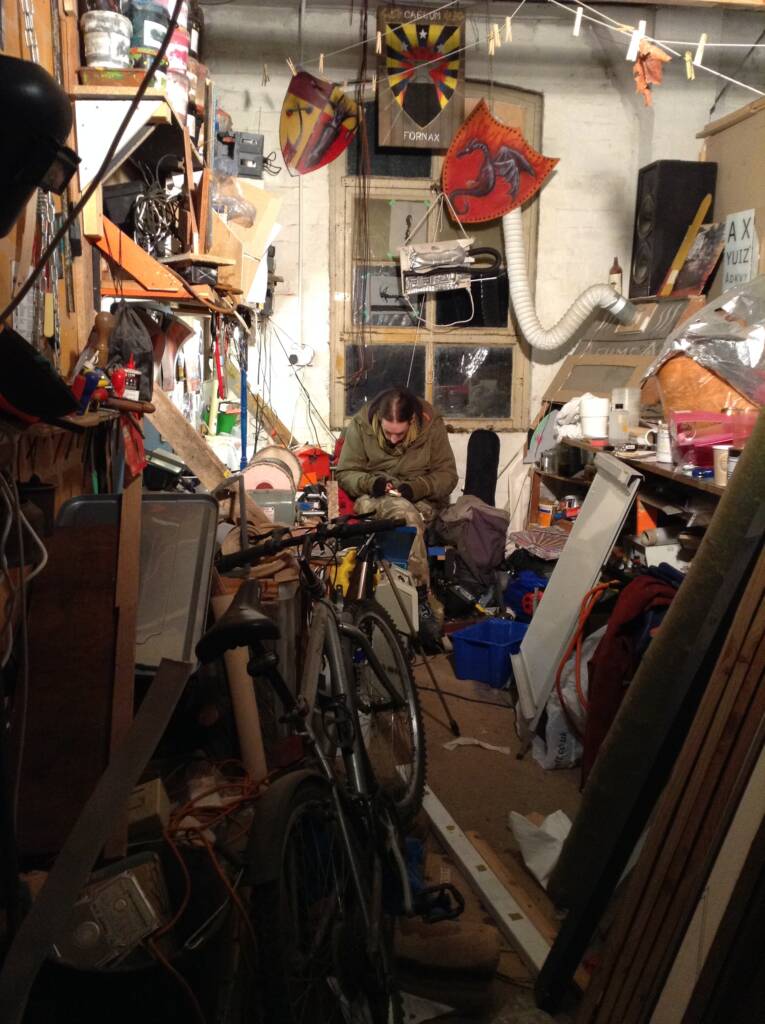
Soon, Tin Roof became more than just a set of studios. It started hosting events and concerts, bringing together people who would never have crossed paths otherwise. As more crossovers happened, new projects were created and artists finally had options. Staying in Dundee didn’t seem as dire as before. During its short life in the space between 2011 and 2016, it became a useful case study, one that proved Dundee’s creative scene was thriving – photos of their space were even included in materials sent to the V&A, before they decided to establish the museum in Dundee. Helfer explains: “We were required to create an idea of a city that was good for creativity, design and the arts”.
But not only was the cost of renting the space an issue, so was the cost of making the space usable at all. In the end, Tin Roof simply couldn’t afford to exist. The collective was priced out of the thriving arts landscape they were essential in creating. Some of the people behind Tin Roof have managed to continue its mission via Dundee Ceramics Workshop, which has grown significantly and is testament to the tenacity and resourcefulness of the group. The unique community created in the Bellfield Street building, however, could not be easily replaced.
Jo Helfer has recently reflected on the whole experience: “I was recently talking to an artist who was a big part of the Tin Roof community, and he’s essentially stopped making art and is super discouraged. It felt like not only was a physical space closed down but also a community, or a way of bringing a community together […] The impact of it is that most of us are not in Dundee anymore and have struggled to find something similar that meets our needs in the same way. I feel disconnected from the creative scene and definitely don’t know how to create that without physical autonomous spaces where we can get together.”
Deep into the Vision Building, right behind Riverside Tesco, a co-working space was created. Walking through the doors, you’d be faced with a large statue of a Griffin – the mythological creature with the body of a lion and head of a bird. The groups and organisations working inside made up an equally anachronistic mixture of parts.
You would see Creative Dundee, NEoN Digital Arts, Biome Collective, Bit Loom Games and a number of other groups that while sharing the designation of ‘creative industries’ had little else in common. Donna Holford-Lovell (NEoN) brought those groups together and found the space after the closure of Fleet Collective, another fascinating amalgam of makers previously based at Chamber Building, across from McManus Galleries.
Malath Abbas is a game designer, creative producer and founder of Biome Collective. Working at Unit 5, he got to experience the day-to-day of the eclectic creative space: “It attracted people from different disciplines and identities. When there was a delegation from another country, they’d come to Unit 5 and see the creative industries in action.”
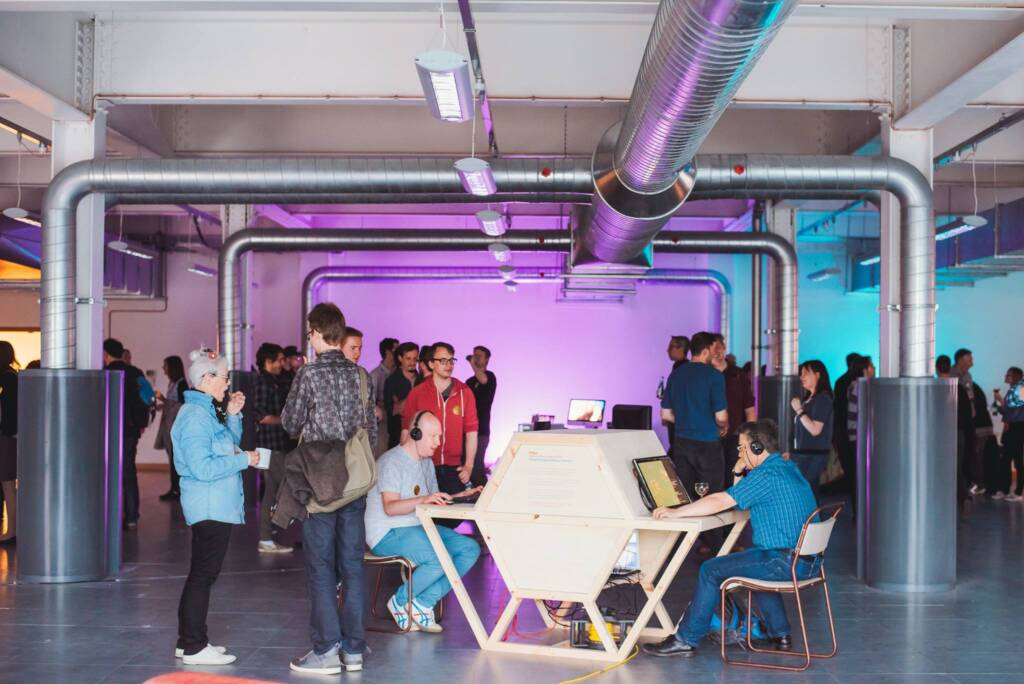
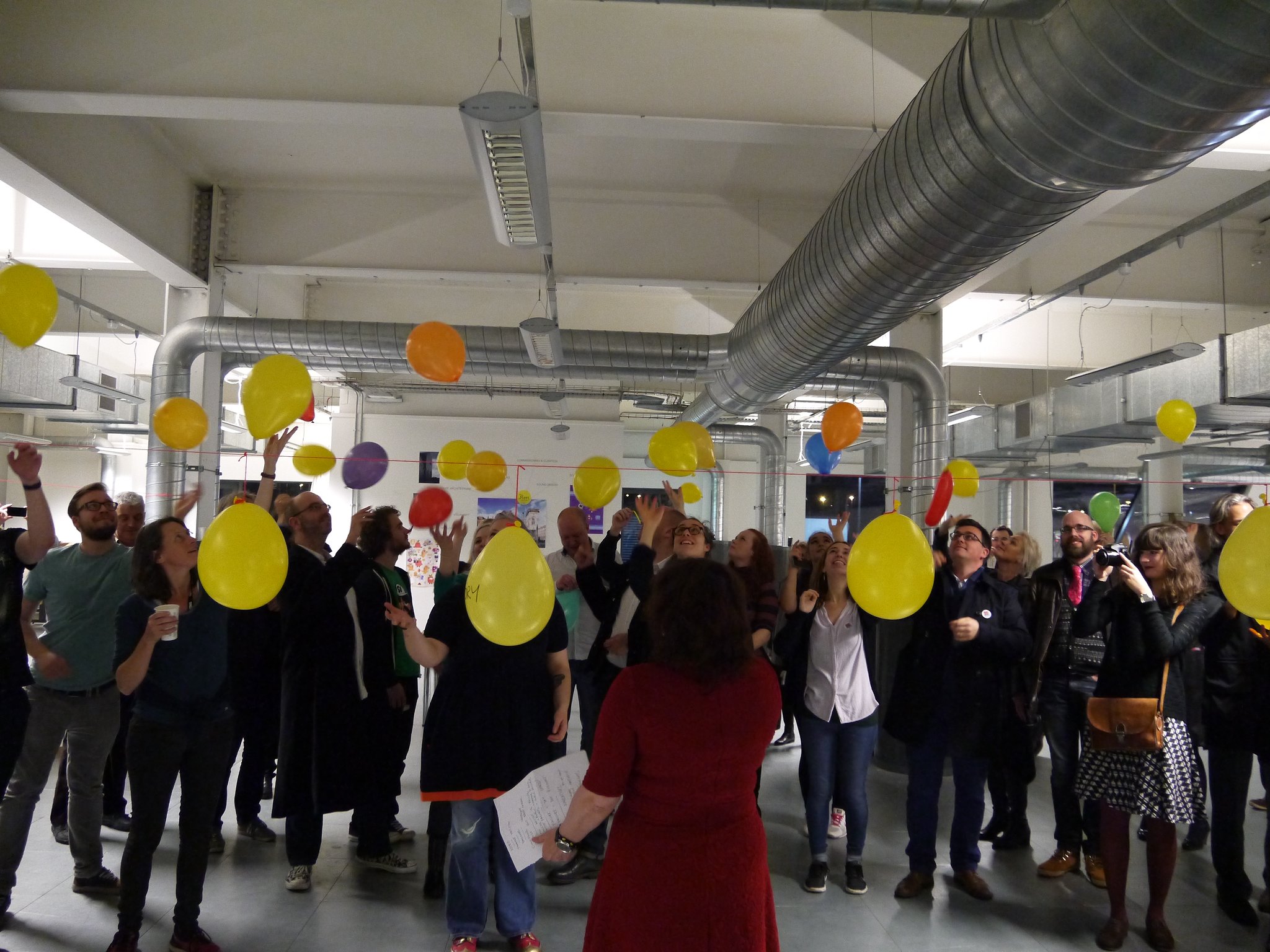
Working in close quarters led to collaboration. Partnerships of all sizes were created. It became a place for expertise to be shared – often sitting around the lunch table. Questions about design, running events, marketing, funding applications, career decisions and policy would always find a willing and knowledgeable ear. Though there was less overlap when it came to occupants, this fertile ground is in the DNA of both Unit 5 and Fleet Collective.
Much like Tin Roof, the two were regularly showcased to just about anyone visiting the city – whether from the Scottish Government, UNESCO, British Council or the international press. On any given day you might see reps from a large international games company or members of an arts collective in the Highlands who heard of the space and had to come see how it worked.
But the factors that made it affordable and accommodating also made it precarious. Eventually, the space would be taken over by larger companies that were able to pay standard rates. Abbas reflects on his time at Unit 5 and what it looks like now: “Now it’s all frosted glass, with us it was an open door policy: friendly, accessible”.
Dr. Katherine Champion – Senior Lecturer in Communications, Media and Culture at the University of Stirling – recently published a study on how Creative Stirling was essential in bringing people together and fighting social isolation during the COVID-19 lockdowns. It concludes that both their physical space and their collaborations with other organisations (in and out of the creative industries) were essential in achieving those aims.
The report reads: “While the team encountered challenging situations during this time related to deprivation and the absence of wider support in/for the local area, there was also a feeling of ‘huge community spirit’ where Creative Stirling ‘started conversations, we talked to everyone, and everyone talked to us’”. The value of Creative Stirling was in holding things together, strengthening a community with a physical and visible space.
This transformational impact of creative spaces is not limited to Stirling. There are numerous success stories: The Stove Cafe in Dumfries, Look Again Project Space in Aberdeen and Findhorn Bay Arts’ shop & hub on Forres High Street. All are in smaller towns and cities, strengthening the local creative scene and making space for creativity. As described by Deveron Projects, the group behind Square Deal in Huntly, projects like these create space to “test new ideas locally”.

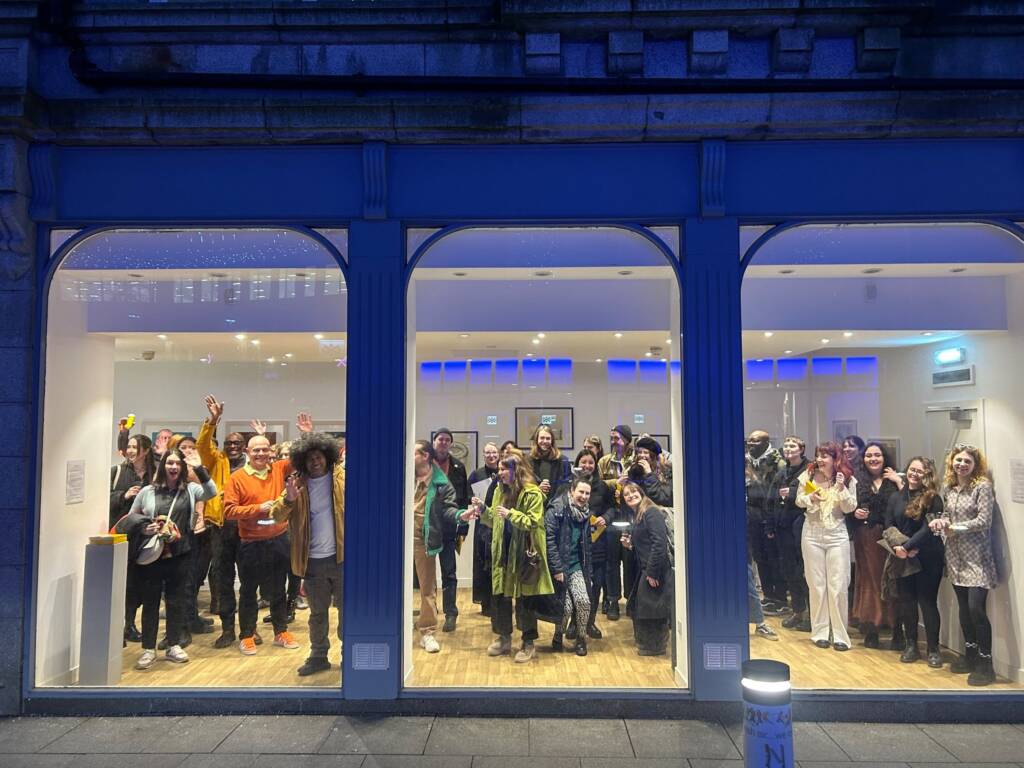
Repeatedly we see these spaces become regenerative and essential in the community in times of crisis. The fact that making room for communities to make together has had such a positive impact elsewhere in Scotland, provides a fascinating insight into Unit 5 and Tin Roof. Both groups offered exactly that, and both communities came to an end when deprived of those elements. Despite their differences, they became signifiers of Dundee’s creative vibrancy.
Over and over we see these groups reinvent themselves: Fleet Collective to Unit 5 and the Keiller Centre; Tin Roof to Dundee Ceramics Workshop. Each time showing that with less than essential resources they can become the face of a city defined by creativity. Across the country we see these kinds of spaces thriving when given the recognition warranted by the impact of their work.
If what we can learn from all of these creative spaces across the country is that 1. offering space and 2. nurturing diverse collaborations can make a real difference in a community during a time of crisis, the inverse is also true. As Jo Helfer elaborates: “What I have found out since is that many people who were involved in that community [Tin Roof] are now quite isolated”.
Grassroots creative spaces are about horizons and possibilities. If the axiom that a rising tide lifts all boats is true, we should understand Unit 5 and Tin Roof not as boats but as the tide itself. Without them we’re left dry with a grounded fleet. Moving forward, it is important to fund and trust grassroot spaces of creativity, but more fundamentally, there needs to be a recognition of what is lost if they go away.
A guest post about Tin Roof on the Creative Dundee website, published in March 2012, strikes a hopeful tone: “Amongst so many diverse people, there always appears to be someone willing to help you out when you’re in a rut or just looking for inspiration”. Creative community spaces generate the kind of uncertainty that attracts inspiration and gets us unstuck; we’d be wise to protect them.
Sam Gonçalves is a filmmaker, writer and community organiser originally from Brazil. He is currently working with a number of organisations including The Bureau of Investigative Journalism, boom saloon and Vox Liminis. He is interested in narratives and the role they play in solidarity, liberation and collective action.
If you’d like to learn more about our ongoing creative spaces work, our Creative Spaces Producer Eilish, shared more about our ambitions in the blog and online event Making Space for Creativity and Collaboration earlier this year.

If you would like to support us in creating even better content, please consider joining or supporting our Amps Community.